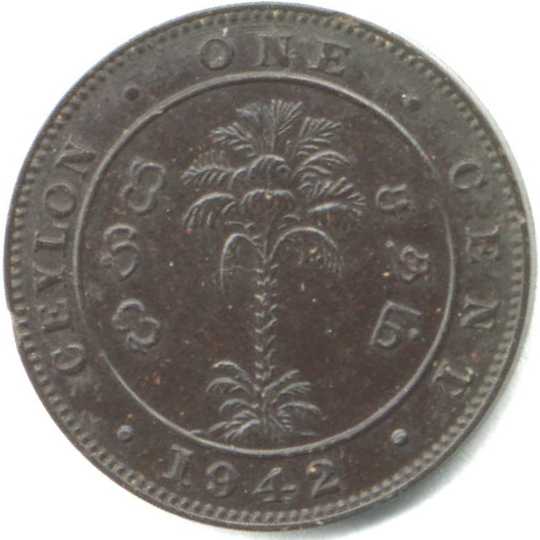| SPECIFICATIONS | |
| Denomination | 1 cents |
| Alloy | Bakelite |
| Diameter | 22.4 mm |
| Thickness | 1.8 mm |
| Weight | 0.81 gms |
| Shape | Round |
| Edge | Plain |
| Die-Axis | 0° |


|

|

| ||||||||||||||||||
| KM Unlisted | ||||||||||||||||||||
Obverse : Crowned bust of George VI to left in high relief
in the center with Engraver initials P.M. in relief
on the truncation of the shoulder.
Legend GEORGE VI KING AND EMPEROR OF INDIA. broken by the crown,
within dot circle along periphery with raised rim.
Reverse : A Talipot palm in the center with
සතය in Sinhala on left,
சதம் in Thamil
on right,
within inner circle. · CEYLON · · CENT · above,
and year 1942 below in annulus within dot circle along periphery with raised rim.
Since they were not done by the Royal Mint are they a Fantasy. But since they were sent to Bank for evaluation does it make them true Patterns. ? This Pattern is not listed in Pridmore or in Krause as yet.
The Pattern was sold at Dick Ford collection Taisei-Baldwin-Gillio Auction #19 23 Feb 1995 lot 255 for US$400+10%, claiming to be the only specimen of the few known in private hands. Not True. I would very much like to know the location of the other known specimens including the one sold in the Dick Ford collection.
Retired officer T. M. U. Sallay of the Central Bank of Ceylon, confirmed that it is an Pattern sent to CBC. The Bakelite was not durable and he remembers one specimen which had broken.
The pattern was scanned at 600dpi and the images are displayed at 250dpi. I thank Graham Dyer of the Royal Mint and Bruce Colins of Krause for the growing information on this piece.
This Lankan Bakelite Pattern is interestingly similer to the 1942 WWII - US patterns including one in Bakelite.